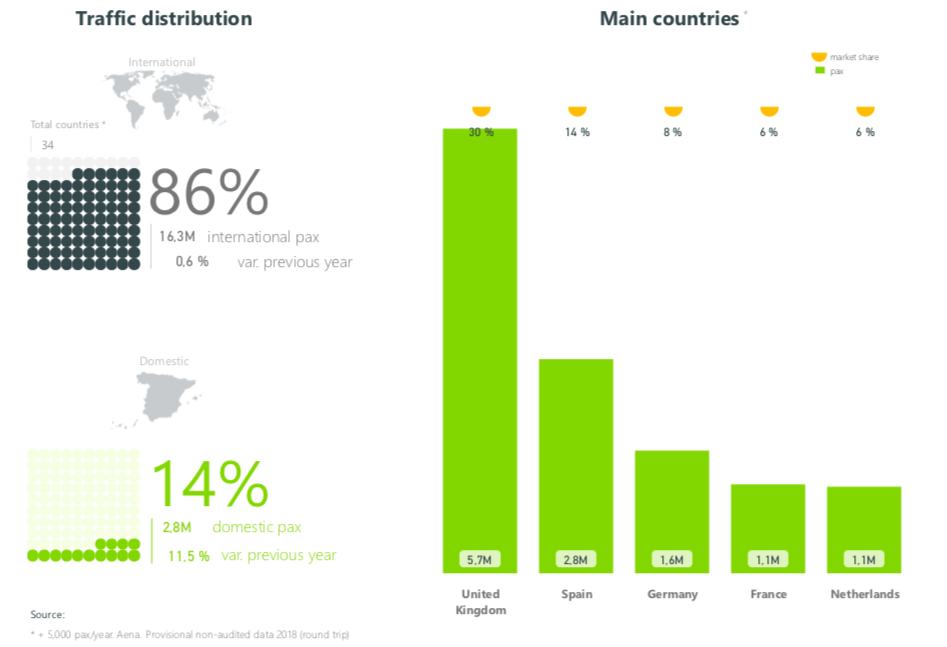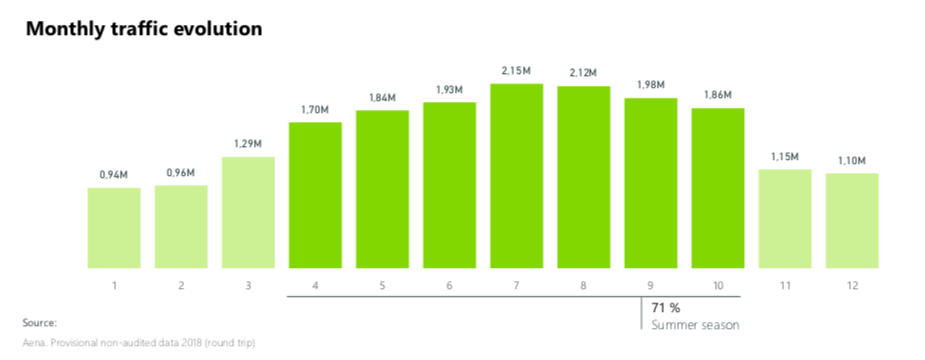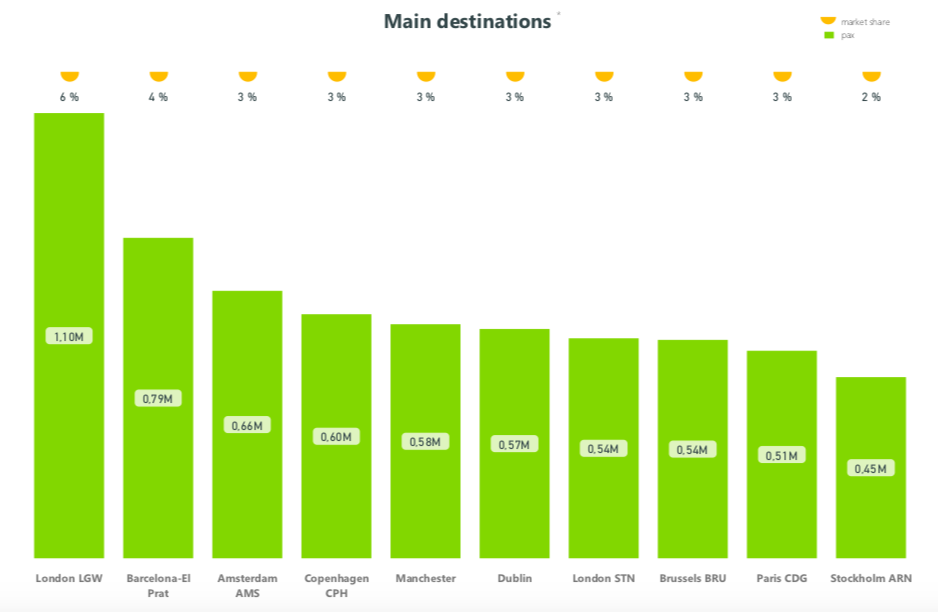Last year, Málaga airport broke the record of the number of passengers travelling to Costa del Sol.
In general, 2018 was so far the best year in the rise of Spanish tourism for the southern coast of Spain. Last year Spain reached a historical figure of 263.7 million passengers, a growth of almost 6%.
For the first time in history, Málaga registered 19 million passengers travelling both nationally and internationally. The numbers were higher by 2.17% than the previous year bringing 19,021,704 passengers, as reported by AENA, the Spanish Airports and Air Navigation.
According to the ANEA report from 2018, Málaga also broke the record of volume of landings and takeoffs by 3% than last year, reaching 141,313.
Most frequent nationalities
Considering the destinations, AENA notes that the United Kingdom remained a leader in 2018, bringing 5,7m travellers.
Over 2,7 million travellers were within the Spanish borders. The domestic market grew by 11.5% in comparison to 2017. The domestic market positioned itself as the second most demanded airport in Spain.
The next highest number of travellers came from Germany, 1.6 million, France 1.1 million and Holland 1.1 million.

Source: AENA
Málaga Airport- the busiest August in 100 years
Malaga-Costa del Sol Airport closed the best August of its 100-year history by exceeding 2.2 million passengers. The growth represents a 4.1% increase from August 2018. This is the highest Málaga has ever reached in August in 100 years.
Of all the travellers, the United Kingdom remained the strongest with 696,538 passengers, Germany (163,177) and France (153,242). Holland (115,631) and Ireland (111,546) also brought significant numbers.

Source: AENA
2019 predictions
The statistics from 2019 so far suggest that 2019 will be another year that will break the number of passengers. The record will be sprayed again and the 20 million users can be exceeded. AENA predicts that numbers will go over 20 million this year. Back in March, they announced that airlines scheduled 16 million seats at the Málaga airport just for the summer season, so between March 31 and October 26. This shows an increase of 7.1% over the same period last year.
This makes Málaga the third fastest growing airport in Spain, right behind Madrid with 45.6 million seats and Alicante with12 million places.

Source: AENA
Málaga and CO2 emissions
Since CO2 emissions from air transport are today one of the most polluting emissions, some of the airports that are part of the AENA network work under the Airport Carbon Accreditation (ACA) program.
The Airport Carbon Accreditation program establishes an accreditation system based on four levels, which respond to progressive commitments to reduce CO2 emissions derived from airport activity. Malaga airport infrastructure has achieved the second of the four levels, Level 2, thanks to the implementation of a Carbon Management Plan that includes a battery of measures, which has allowed them to minimise their carbon footprint.
Málaga is one of the few airports in Spain that works to improve carbon emissions.


